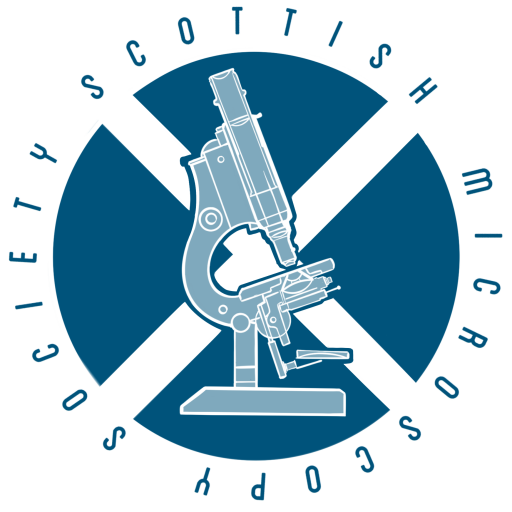Winner of the 2021 'Video' Competition, sponsored by Digital Pixel
Dictyostelium discoideum cells stably expressing the intracellular cAMP-sensor Flamindo2
Peggy Paschke, CRUK Beatson Institute
Dictyostelium discoideum is a social amoeba that lives in the soil. As single cells they mainly feed on bacteria. If their nutrient sources are getting exhausted the cells aggregate and form fruiting bodies to survive these harsh conditions.
When Dictyostelium undergoes starvation, the cells start to communicate with each other through the secretion of the signaling molecule cAMP.
The secretion of cAMP happens in waves which are visualized by the Flamindo2 reporter. Flamindo2 is based on the green fluorescent protein mCitrine which contains an EPAC motif that can bind cAMP. If cAMP is bound by Flamindo2 the fluorescence signal decreases.
Shown are cells which were starved for 4h before starting the imaging to induce the starvation response. The movie shows the following 6 hours of the developmental cycle of Dictyostelium, starting with early cAMP waves that later lead to the formation of streams and mounds.
Competition Entries
1. Biochemistry in colors: Phosphoinositide conversion under the microscope
Hannes Maib, University of Dundee
Post Doctoral Researcher
Cellular membranes are composed of a thin bilayer of lipids that separates the cell and its internal compartments from their surroundings. Even though these membranes are in constant flux, they retain their distinct identity. Key factors that control this membrane identity are the family of Phosphoinositides; small phospholipids that act as signposts of identity throughout all cellular membranes. Their interconversion by lipid kinases and phosphatases is crucial for organelle homeostasis and fundamental for cellular function in health and disease. Using membrane coated silica beads of 10µm diameter, I was able to reconstitute the real time conversion phosphatidylinositol-4-phosphate (PI(4)P), into phosphoinositide-4,5-bisphosphate (PI(4,5)P2) after addition of the Phosphatidylinositol 4-phosphate 5 kinase (PIP5K). This biochemical reaction is visualized by fluorescently labelled probes that detect either PI(4)P (Cyan) or PI(4,5)P2 (magenta). As PI(4)P is converted into PI(4,5)P2, the PI(4)P probe is lost and the PI(4,5)P2 is recruited to the membranes, which results in a color change under the microscope. The reconstitution and visualization of this biochemical process is an important step towards defining the kinetic activities of phosphoinositide conversion mechanisms and how they are regulated.
2. Powering The Beast
Anh Le Hoang, CRUK Beatson Institute
Scientific Officer
The image shows an Ewing’s sarcoma cancer cell stained for the actin cytoskeleton (LifeAct-GFP, purple) and its mitochondria (MitoTracker Red CMXRos, orange). The cell was imaged at X630 magnification every 9 seconds using the Super-resolution microscopy with AiryScan Zeiss880 system. This particular cancer cell was depleted of both proteins called CYRI-A and CYRI-B, important novel regulators of the actin cytoskeleton. We hypothesised that CYRI deletion might affect mitochondrial dynamics. The image was taken at The Beatson Advanced Imaging Resource (BAIR).
3. Neutrophils in a live breast cancer slice
Frederic Fercoq, CRUK Beatson Institute
Post Doctoral Researcher
A slice of a live murine breast cancer was imaged using a confocal microscope (zeiss 880) equiped with an environmental chamber to analyse immune cells behaviour.
Cyan = Nuclei
Yellow = Leukocytes
Purple = Neutrophils
4. Dictyostelium discoideum cells stably expressing the intracellular cAMP-sensor Flamindo2
Peggy Paschke, CRUK Beatson Institute
Post Doctoral Research Associate
Dictyostelium discoideum is a social amoeba that lives in the soil. As single cells they mainly feed on bacteria. If their nutrient sources are getting exhausted the cells aggregate and form fruiting bodies to survive these harsh conditions.
When Dictyostelium undergoes starvation, the cells start to communicate with each other through the secretion of the signaling molecule cAMP.
The secretion of cAMP happens in waves which are visualized by the Flamindo2 reporter. Flamindo2 is based on the green fluorescent protein mCitrine which contains an EPAC motif that can bind cAMP. If cAMP is bound by Flamindo2 the fluorescence signal decreases.
Shown are cells which were starved for 4h before starting the imaging to induce the starvation response. The movie shows the following 6 hours of the developmental cycle of Dictyostelium, starting with early cAMP waves that later lead to the formation of streams and mounds.
5. The inner fire-workings of the heart
Bronwyn Berkeley, University of Edinburgh
PhD Student
This image shows the blood vessel network in a slice of heart taken from a mouse. Located centrally in the image we can see a larger blood vessel that branches out. The multi-colored confetti we can see in the image are in fact blood vessels! The endothelial cells, that line the inside of all blood vessels, in these special “Confetti” mice are marked with colored fluorescent proteins. The image was acquired using the Leica SP8 5D confocal microscope and 3D projected using IMARIS software.
6. Tunneling through spinal cord
Karthik Krishnamurthy, Thoma Jefferson University
Post Doctoral Research Fellow
Immunolabeling-enabled three-dimensional imaging of solvent-cleared organs (iDISCO) of 4-month-old mouse spinal cord. Astrocytes are labeled with Glial fibrillary acidic protein (blue) and neurons are labeled with NeuN (yellow). Video represents Z stack imaging through the whole spinal cord using Nikon A1R confocal microscope.
7. Red Cells Green Cells
Julia Dong Hwa Oh, The Roslin Institute, University of Edinburgh
PhD Student
This video shows the anatomical destination of red cells amongst green cells in an embryonic chick wing. A graft from a transgenic chicken that endogenously expresses tdTomato was inserted into a GFP chick wing host. The wing was allowed to grow for five more days before dissection and clearing with CUBIC. I travelled to the CVR in Glasgow to image the wing with the Zeiss Z.1 Lightsheet microscope (thanks to Colin Loney) and the resulting file was processed with Imaris. My experience with this microscope helped in the acquisition process for Roslin’s own lightsheet (thanks to Anna Raper), which I am very excited to image with further! Our chick wing samples are large, often reaching 1cm in length, and their 3D structure must be intact for anatomical analysis. The lightsheet is ideal for imaging our wings and what is more, it takes less than ten minutes!




Get in touch with the Scottish Microscopy Society!
Feel free to contact us or join our mailing list using the contact form below.
